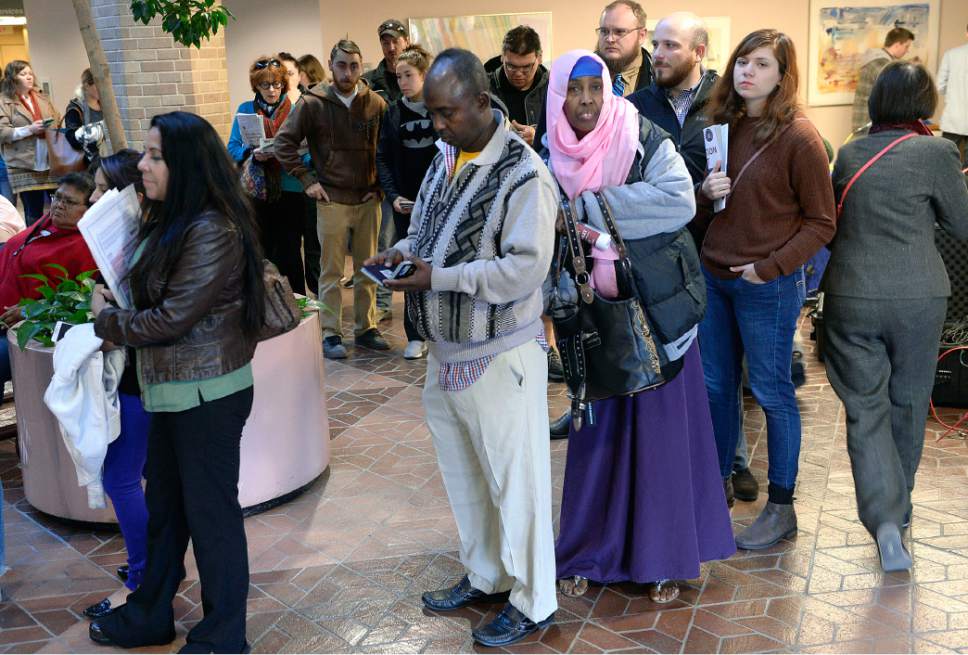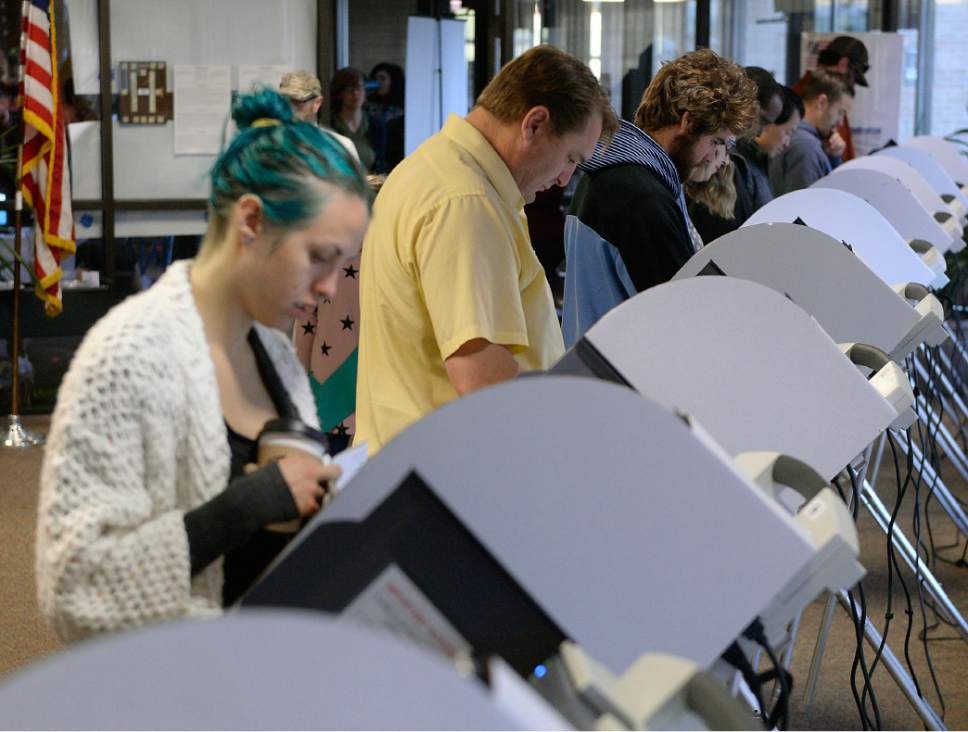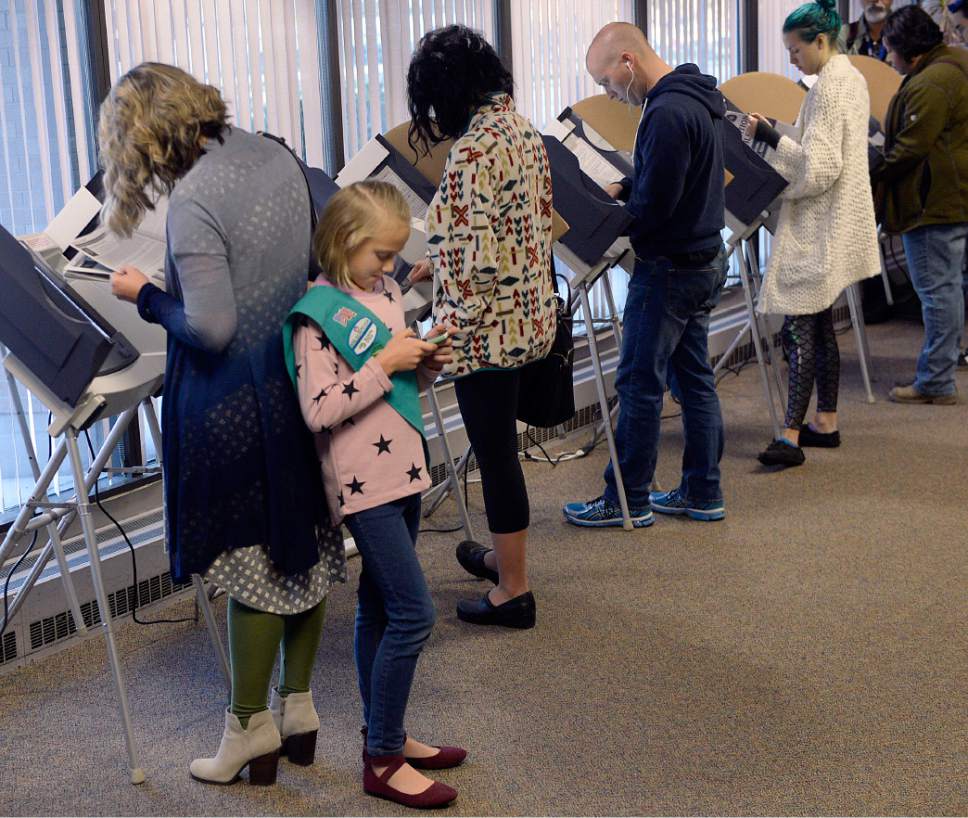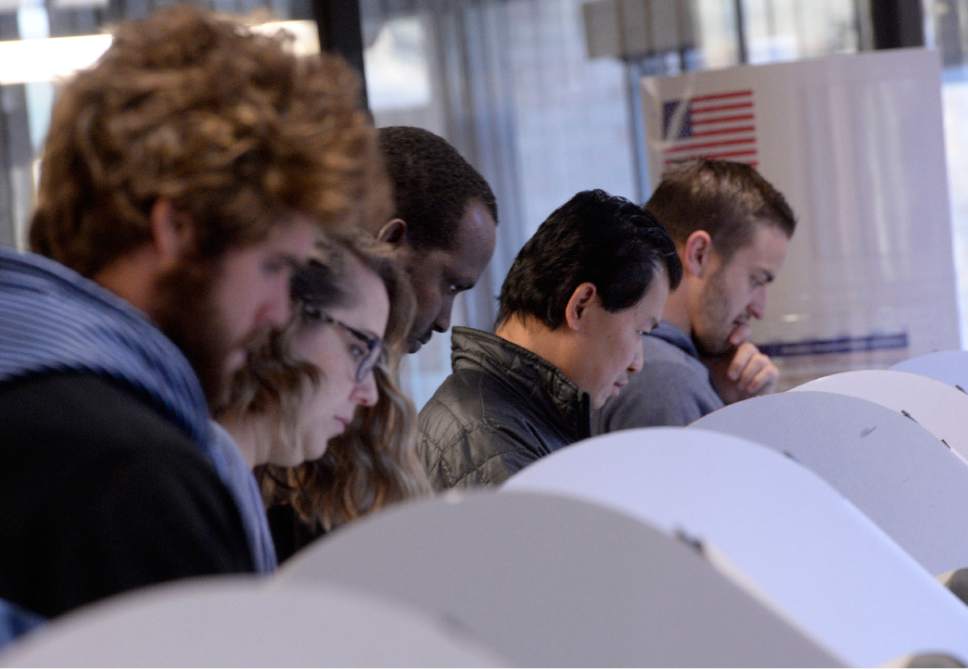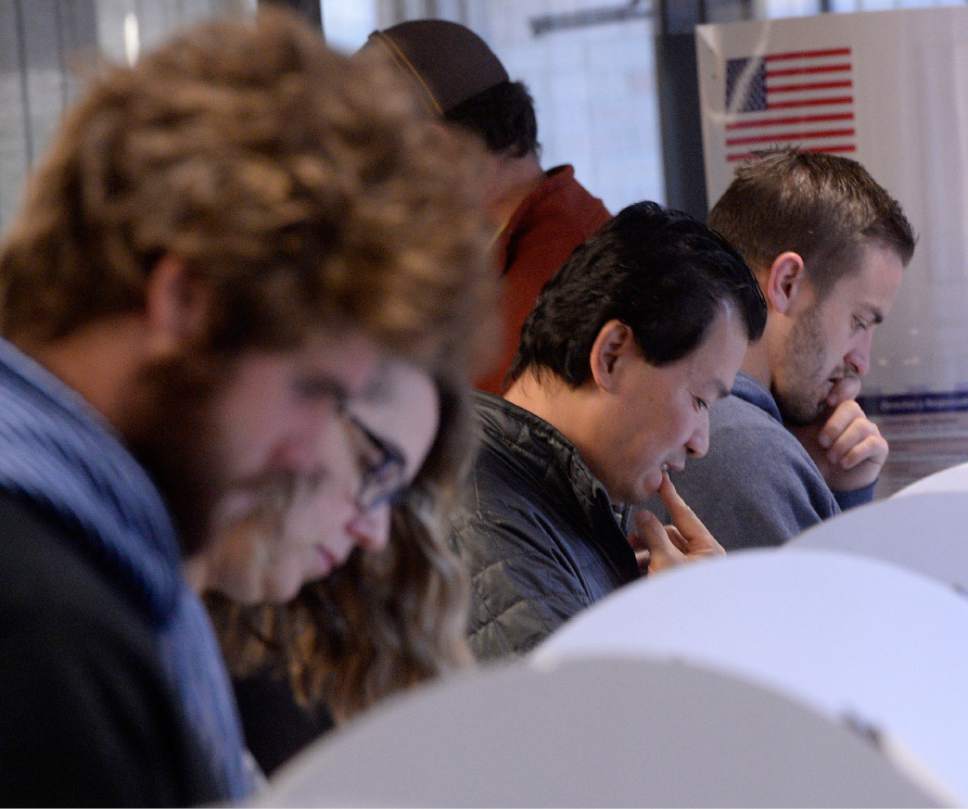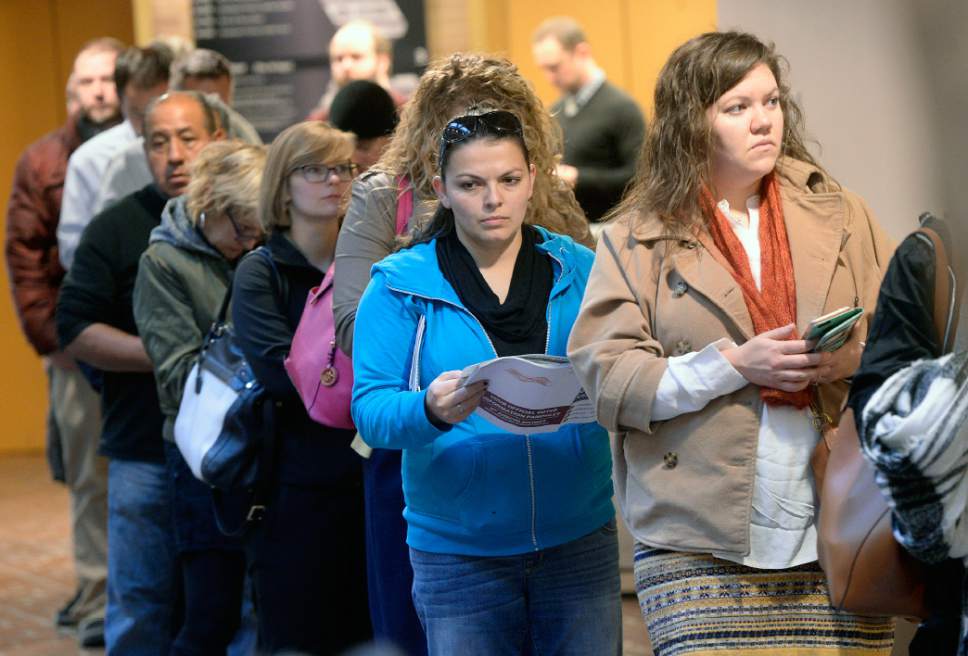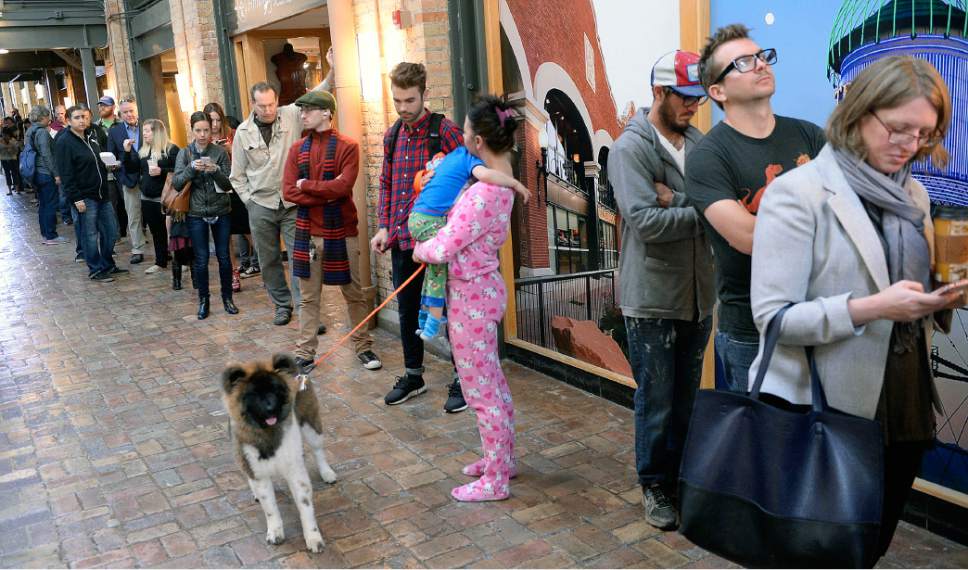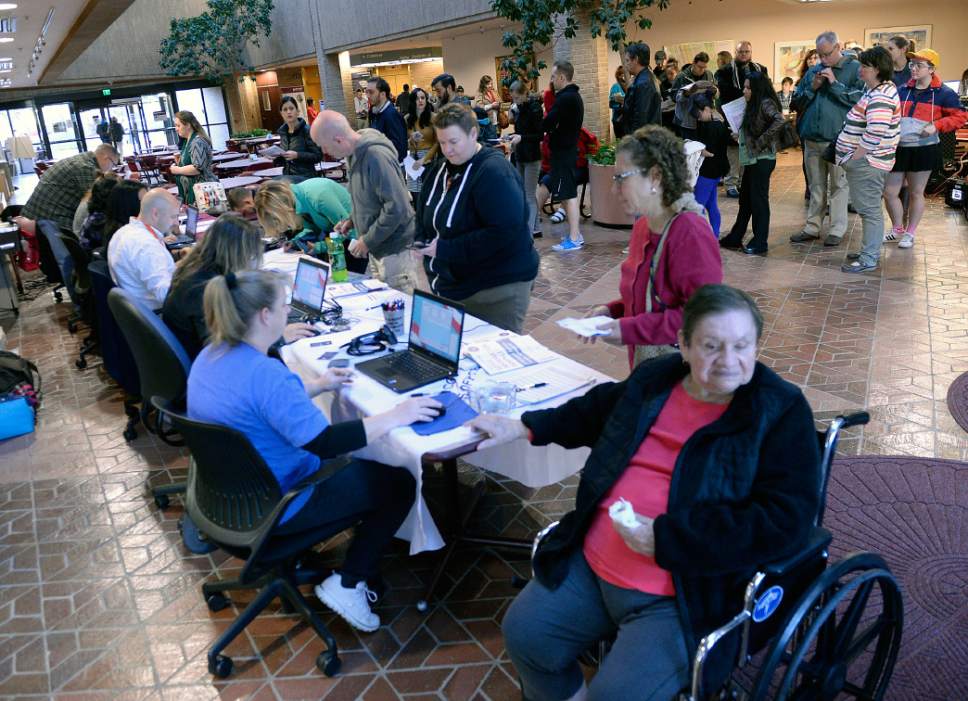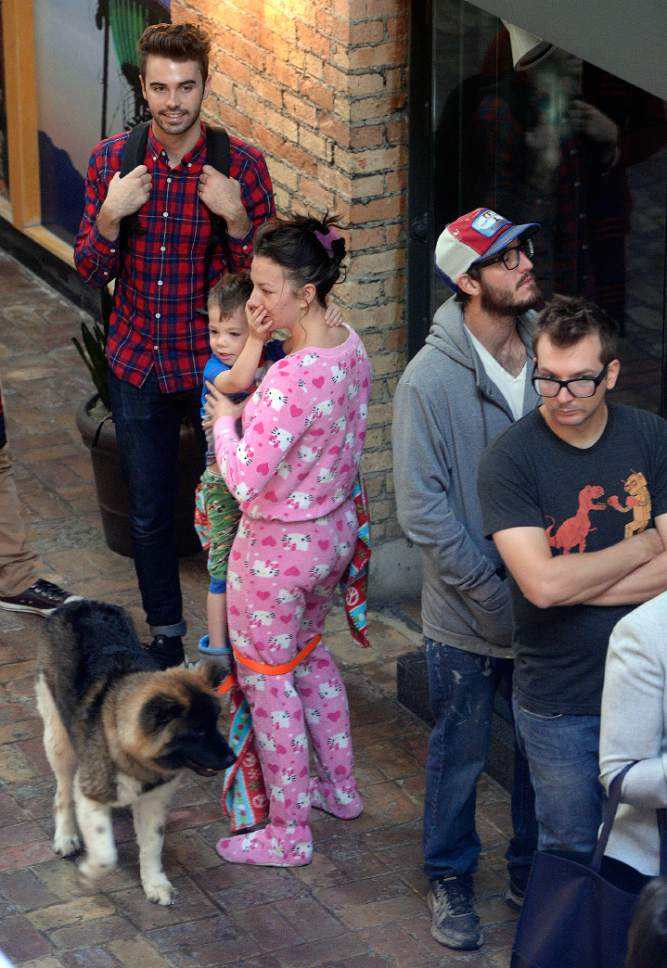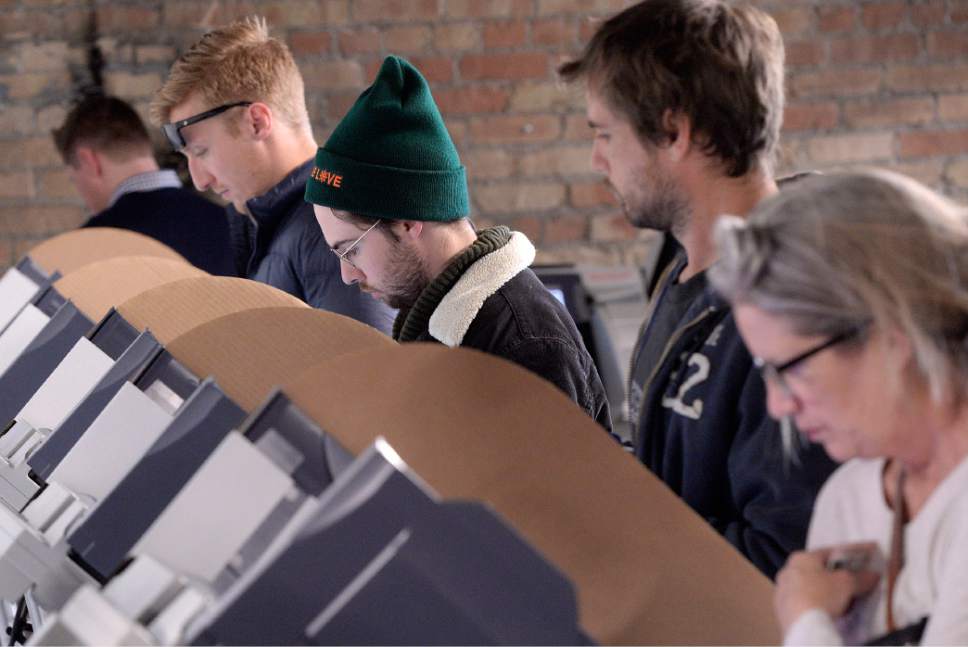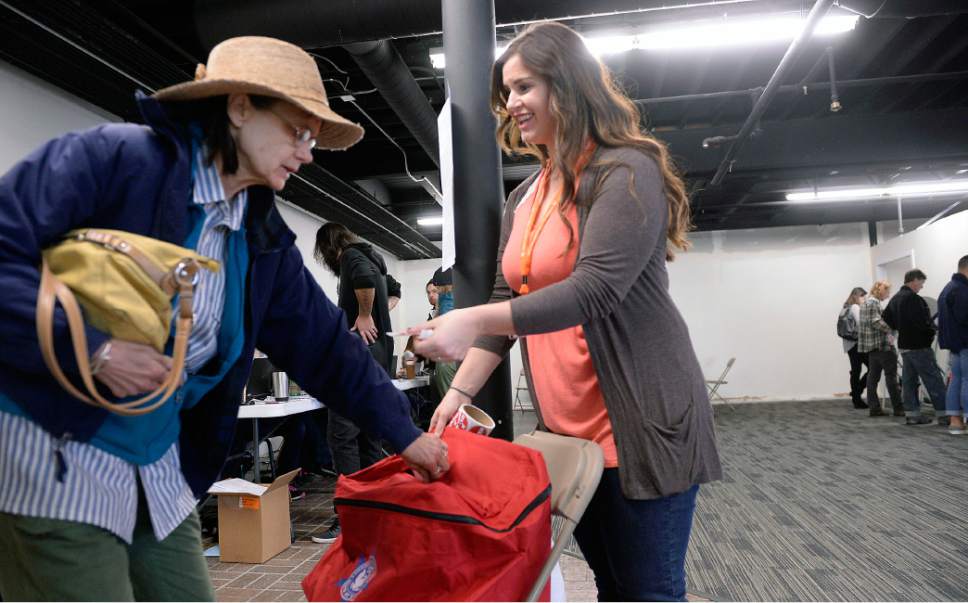This is an archived article that was published on sltrib.com in 2016, and information in the article may be outdated. It is provided only for personal research purposes and may not be reprinted.
The 2016 election has had the feel of a reality TV show at times, with major plot twists involving sexual allegations, federal investigations and late challengers coming out of nowhere. But now Election Day is here and it is time for the big reveal.
Who will become the next president? That is finally in the hands of voters.
In Utah, more than 534,500 people had already cast their ballots as of Monday morning, and at least that many are expected to do so Tuesday. It could be a crush that overwhelms the voting system, which had counted on more ballots being mailed in by now.
"I think we are going to be very busy tomorrow and voters are going to be waiting in long lines," said Rozan Mitchell, Salt Lake County's elections director, on Monday. "They are going to be mad."
In Utah's most populous county, voters will be lining up at 37 voting centers, which were designed to help people who needed assistance filling out ballots or lost their mail-in ballots. In previous, more traditional elections, the county offered hundreds of polling places.
Utah County, the state's second largest, has stuck with that traditional system of in-person voting.
The state's Democrats have been more eager to turn in ballots than Republicans have, but it's hard to gauge how that will affect the final results. Recent polls have found Republican Donald Trump, a former reality TV celebrity, with a lead in the range of 6 to 10 percentage points in the state, followed by Democrat Hillary Clinton and independent conservative Evan McMullin, a Utah native who jumped into the race in August. The three-person race turned Utah into an unlikely swing state, adding some drama to a race Republican nominees normally take for granted, usually in a landslide. Nationally, most swing-state polls show Clinton with a lead, and if those hold true, she'll be the first woman elected U.S. president.
—
Nuts and bolts • Here's some information on what to expect:
For those who haven't voted yet, the polls are open from 7 a.m. to 8 p.m. You have two options. You can bring your completed mail-in ballot in the sealed envelope to any polling place and drop it off, or you can stand in line and vote using an electronic voting machine. Anyone in line by 8 p.m. will get to vote. To find the closest voting center to you, go to vote.utah.gov and input your address. Don't drop your ballot in the mail Tuesday — it had to be postmarked by Monday.
What if you haven't registered to vote? • If you live in Salt Lake County or one of these seven other counties, you can register at the polling place and immediately get a ballot: Weber, Davis, Cache, Kane, Millard, Sanpete and San Juan counties. Allow extra time for possible lines.
Is everyone doing a mail-in election? • Utah County headlines the list of areas that are largely staying with in-person voting on Election Day, instead of relying on vote by mail. The others are Box Elder, Carbon, Daggett, Emery, Piute, Tooele and Washington counties.
What is on the ballot? • Beyond the presidential race, Utah is voting for governor, U.S. Senate, all four House members, and slates of state Senate and House members, county offices, school board seats, judges and a few constitutional amendments.
Why are there poll monitors in San Juan County? • Federal poll watchers have been in Utah's portion of the Four Corners area many times before, largely to ensure Navajos and people who don't speak English as their first language have an equal chance to vote. But there's a unique issue in 2016: Now that the county has gone to mail-in balloting, it has opened only one polling place in Monticello, meaning Navajos who need translation help must drive hours to get that assistance. Gov. Gary Herbert faces Democratic challenger Mike Weinholtz in what Herbert has said will be his final election. Sen. Mike Lee seeks election to a second six-year term against Misty K. Snow, the first transgender candidate nominated by a major party in a U.S. Senate race. Utahns will give thumbs up or down on all four U.S. House members, with first-term Congresswoman Mia Love's rematch against Democrat Doug Owens in the 4th District drawing the most attention. Salt Lake County Mayor Ben McAdams seeks a second term against Republican challenger Dave Robinson. County Councilman Richard Snelgrove battles against a well-funded Democratic challenger in Catherine Kanter.


